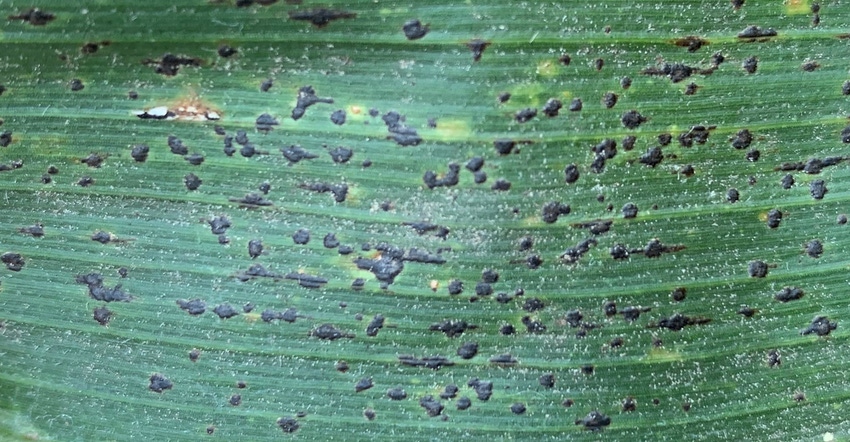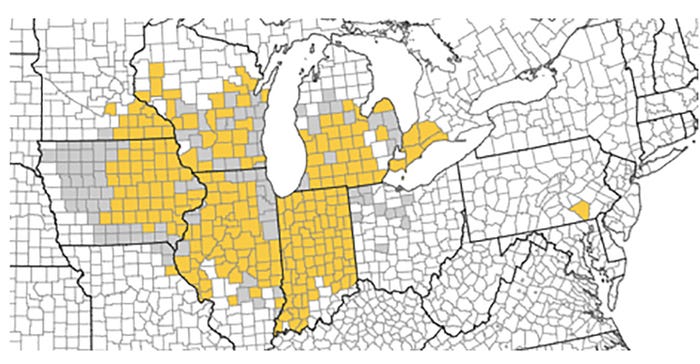January 21, 2021

Tar spot of corn is a relatively new disease, having been first found in the United States in 2015 on corn in seven counties in northwest Indiana and 10 counties in north-central Illinois. The first detection in Iowa was in Jones County in 2016. By 2019, it had spread to all but extreme western Iowa. In 2020, tar spot was confined to eastern Iowa.
Tar spot of corn is caused by the fungus Phyllachora maydis. The pathogen overwinters in corn residue and produces spores the next growing season that are dispersed to nearby corn crops. Infection is favored by a cool, damp environment:
temperatures from 60 to 72 degrees F
wet leaf surfaces
relative humidity over 85%
Tar spot generally begins to appear just before the reproductive stages of corn development (silking and later) and can cause yield losses if the ear leaf becomes severely infected prior to the R3 (milk) stage of corn development. In some years, the disease has been observed before tasseling in Indiana and Michigan.

Tar spot lesions consist of shiny, black, circular to irregular-angular spots on either or both sides of leaves (and husks). The spots may look like they have tails or “bleed.”
Often “bug poop,” dirt, moldy pollen, and late-season rust teliospores or saprophytic fungi are mistaken for tar spot. Tar spot lesions cannot be scraped off with a fingernail, nor can they be washed off the leaf, while the lookalikes can.
Lines of defense
If tar spot of corn is a concern locally, one line of defense is corn genetics. While there currently are no resistant hybrids available, hybrids do vary in their susceptibility or tolerance to tar spot, and most companies now have some evidence of how their hybrids respond to tar spot. However, fields should be scouted for tar spot regardless of hybrid selection. This is especially true for irrigated fields in areas with a history of tar spot.
Scouting and rescue treatment decision-making is another management strategy. Typically, decision-making regarding fungicide applications is done as corn approaches the VT (tasseling) to R1 (silking) stage of development.
If tar spot lesions are beginning to appear, a fungicide application may be required. Consider the disease history of the field, and current and forecast weather to determine if disease is likely to progress.
Fungicide trials are in progress across the Corn Belt to determine the optimal timing of application for tar spot control. So far, it appears that the VT to R1 stage of corn development is the best timing. For fungicide product selection, review the corn fungicide efficacy table that can be at cropprotectionnetwork.org. If the 2021 version is not yet posted, check back regularly.
Schmitt is an Iowa State University Extension field agronomist in Muscatine County.
About the Author(s)
You May Also Like






